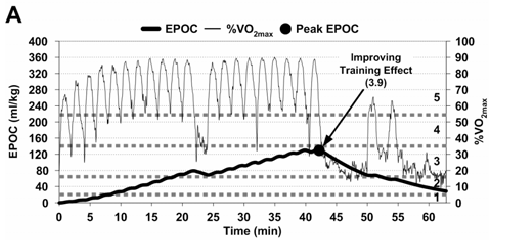Hello all,
I’ve been wondering for years (since I started running with a Fenix watch, and trying to get a consistent and productive training) how to set my training zones and use them.
I’ve probably spent hundreds of hours to try to understand how Garmin (and firstbeat) use the data we provide them to define if we train efficiently or not. I’ve tried every possible setting (HR max, lactate threshold, resting HR) and at some point, I guess I can share a few thoughts I’ve been able to pull from my experience. Of course I could still be wrong so if anyone disagrees, please comment ! It would be interesting to know if anyone has a different experience.
As I said, I’ve tried from the very beginning to set my HR zones right. So I went into a medical center and made an effort test to determine my VO2max, max HR and lactate threshold.
First thing I noticed was that my HR max didn’t fall too far off, and neither did VO2max measured by the watch ! Actually both were pretty close – which makes sense because they’re probably the easiest to calculate (as absolute data, since your HR theoretically can’t go above the measured value : the watch just has to grab the higher value it reads from the sensor, acknowledging it is accurate – which is another debate). Strange thing when the test report mentioned TWO values for threshold : VT1 & VT2 (Ventilatory Thresholds). Quite confusing !
Eventually I of course found out that there are hundreds of ways of describing HR zones, especially zones 2, 3 and 4. Pretty much everyone agrees on zone 1 & 5 (once again, makes sense as they are just minimum and maximum. Not too hard to figure out). So once again, I tried different settings, changing the values for each zone boundaries and checking if the training benefit of my sessions (tempo, VO2max, Anaerobic, sprints…) matched the intensity and duration. Results were that however the zones were set, training labels always seemed to consider percentage of HRmax as the only reference value for the intensity measurement. Which led me to think that zones settings are completely useless, or at best, they are just an easy way to see where you stand during your workout. I am pretty sure the zone settings aren’t baked into firstbeat’s algorithms. I think only HRmax is used for the assessment, and maybe (once again, not sure about it) lactate threshold – unless, as well, a percentage of HRmax is also used to assess it.
None of the ton of documentation I’ve read on Garmin or Firstbeat websites says otherwise, and their zones definitions are quite unspecific, so they can be interpreted very widely... ("easy to hold conversation", "hard to breathe", etc).
More specifically, Garmin seems to consider long workouts under 85% of maxHR as base, regardless of how thresholds or zones are set.
Also, one interesting thing I found out - despite someone wrote in a previous post that they were filtered and the data did not account for the training assessment - warm up and cool down do actually interfere with the type of workout label. So even a hard 2x 10x 30/30 session at VO2max will be labelled as tempo if your cool down mile is a bit too long or too fast. It is common knowledge in polarized training that WU & CD should account for low-aerobic training, but I’m pretty sure TE algorithms just ‘averages’ the workout intensity level over the complete duration. I was able to check that by splitting the workouts sessions in 3 recorded activities – warm up, exercise and cool down – and obviously got different values for aerobic and anaerobic TE. The split session would give base / VO2 max / recovery, while the single session would register as tempo (with 0 as low aerobic score, unlike the first method).
Even though they are the exact same workouts.
I still think the data we get from our watches is quite interesting and it can be very helpful to lean towards a better way of training ! But these two aspects about HR data interpretation are limitations that I believe are very much part of the Garmin ecosystem. You just need to be aware of them to get a better reading of all the data you get from it, and take it with a pinch of salt







